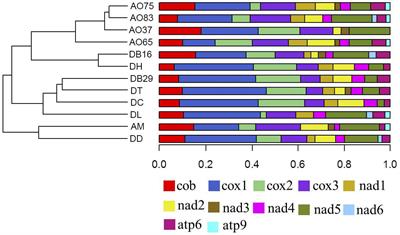EDITORIAL
Published on 07 Jan 2021
Editorial: The Significance of Mitogenomics in Mycology
doi 10.3389/fmicb.2020.628579
- 2,314 views
- 12 citations
12k
Total downloads
48k
Total views and downloads
EDITORIAL
Published on 07 Jan 2021
ORIGINAL RESEARCH
Published on 03 Jun 2020

REVIEW
Published on 29 May 2020

ORIGINAL RESEARCH
Published on 25 May 2020

ORIGINAL RESEARCH
Published on 08 May 2020

ORIGINAL RESEARCH
Published on 05 May 2020

ORIGINAL RESEARCH
Published on 29 Apr 2020

ORIGINAL RESEARCH
Published on 21 Apr 2020

ORIGINAL RESEARCH
Published on 15 Apr 2020
